- Best for task management: Asana
- Best for all-in-one project management: ClickUp
- Best for client project management: Teamwork
- Best for visual project management: monday.com
- Best for enterprise teams: Wrike
- Best for software development teams: Jira Software
- Best for all-rounded workspace integration: Notion
- Best for spreadsheet-like project management: Smartsheet
- Best for in-depth project tracking: Zoho Projects
- Best for lightweight team collaboration: Nuclino
- Is Basecamp worth it?: Basecamp
Basecamp is a well-known project management tool favored by many teams for its ability to enhance collaboration and streamline workflows. It provides a suite of features, including task management, message boards, schedules and document storage, all within a user-friendly interface. However, it may not cater to everyone’s needs, as some teams might require more advanced features like Gantt charts or workload views, which Basecamp lacks. Others might prefer a per-user pricing model or a tool tailored to their industry. As a result, we’ve come up with a list of 10 top Basecamp alternatives.
Top Basecamp competitors and alternatives: Comparison table
Before we delve into the comparison table, it’s worth noting that all the project management tools listed here, including Basecamp, offer essential features such as task management, advanced reporting and file sharing. These are fundamental parts of all the Basecamp alternatives we’re discussing.
| Software | Native time tracking | Customizable workflows | Gantt charts | Built-in automation | Free plan | Starting price |
|---|---|---|---|---|---|---|
| Basecamp | No | No | No | No | No | $15/month |
| Asana | Yes | Yes | Yes | Yes | Yes | $10.99/user/month |
| ClickUp | Yes | Yes | Yes | Yes | Yes | $5/user/month |
| Teamwork | Yes | Yes | Yes | Yes | Yes | $5.99/user/month |
| Monday | No | Yes | Yes | Yes | Yes | $9/user/month |
| Wrike | Yes | Yes | Yes | Yes | Yes | $9.80/user/month |
| Jira | No | Yes | Yes | Yes | Yes | $8.15/user/month |
| Notion | No | Yes | No | No | Yes | $8/user/month |
| Smartsheet | Yes | Yes | Yes | Yes | No | $7/user/month |
| Zoho Projects | Yes | Yes | Yes | Yes | Yes | $4/user/month |
| Nuclino | No | Yes | No | No | Yes | $5/user/month |
1
Jira
Employees per Company Size
Micro (0-49), Small (50-249), Medium (250-999), Large (1,000-4,999), Enterprise (5,000+)
Any Company Size
Any Company Size
Features
Agile Development, Analytics / Reports, API, and more
2
Zoho Projects
Employees per Company Size
Micro (0-49), Small (50-249), Medium (250-999), Large (1,000-4,999), Enterprise (5,000+)
Any Company Size
Any Company Size
Features
Agile Development, Analytics / Reports, API, and more
Asana: Best for task management
Asana is a project management tool that stands out for its comprehensive task management. It offers a simple, user-friendly interface and a wide range of task management features. This focus on task management, combined with its user-friendly interface and good free plan, makes Asana a strong alternative to Basecamp for teams that give priority to task management.
Pricing
Asana provides a free Personal plan for individuals and very small teams. For more features, the Starter plan is $10.99 per user per month if billed annually. It also offers an Advanced plan at $24.99 per user per month if billed annually and an Enterprise plan with advanced features and controls, with pricing available on request.
Features
- Comprehensive task management to keep all your tasks organized.
- Multiple views, such as board, timeline and calendar views, to visualize your project from multiple perspectives (Figure A).
- Automation and integrations to streamline your workflows.
- Advanced reporting for data-driven decision-making.
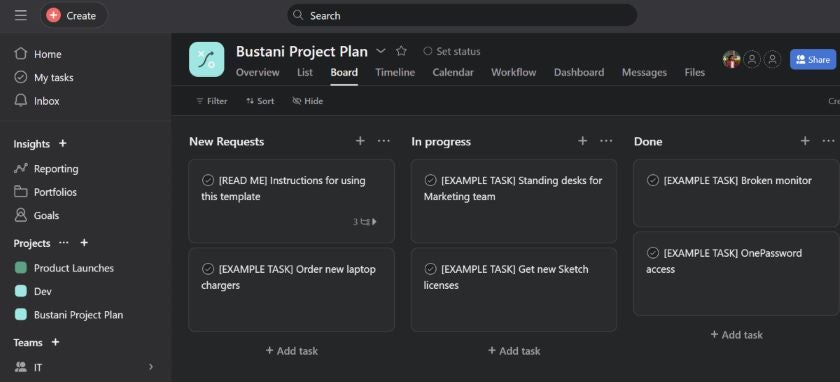
Top integrations
Some of Asana’s most popular integrations are Microsoft Teams, Slack, the Asana for Gmail add-on, Asana for Adobe Creative Cloud and Google Calendar.
Pros
- It’s easy to manage and track tasks, thanks to its standout task management features.
- User-friendly interface, making it easy for your team to use.
- Good free plan, making it accessible for teams on a budget.
Cons
- Limited features in the free plan, which might require an upgrade for more functionality.
- Can get expensive for larger teams, which might be unideal for budget-conscious organizations.
Why we picked Asana
In contrast to Basecamp, we chose Asana for its superior task management and collaboration features. Asana’s extensive integrations and reliable reporting capabilities, absent in Basecamp, give teams the tools they need for efficient project management and communication.
For more information, read the full Asana review.
ClickUp: Best for all-in-one project management

ClickUp aims to be a one-stop solution for all project management needs. It offers a wide range of features, including task management, time tracking, goal setting and even docs and notes functionality. If your team would be well-suited to an all-in-one project management solution, then ClickUp’s comprehensive approach would make it a strong alternative to Basecamp.
Pricing
ClickUp offers a free plan with 100 MB of storage. For more storage and features, its Unlimited plan is available at $7 per user per month, while its Business plan is at $12 per user per month, all billed annually. Its Enterprise plan’s pricing is available on request.
Features
- Comprehensive task management to keep all your tasks in one place.
- Time tracking and goal setting to keep your team focused and productive.
- Docs and notes functionality to centralize your team’s knowledge.
- Multiple customizable views to adapt to your team’s workflow (Figure B).
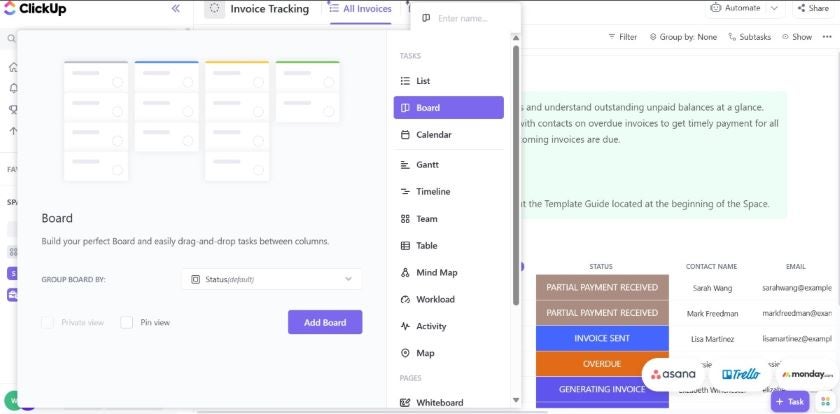
Top integrations
ClickUp’s top integrations cover Slack, HubSpot, Make, Gmail and Zoom.
Pros
- All-in-one solution, reducing the need for multiple tools.
- Customizable for different needs, making it adaptable to various workflows.
- Competitive pricing, offering a balance between cost and features.
Cons
- Can be overwhelming with so many features, which might require some time to fully explore.
- Interface can be cluttered due to the vast array of features, which might affect usability.
Why we picked ClickUp
ClickUp stands out as a more feature-rich alternative to Basecamp, with diverse customization options and a wide range of functionalities for project management that truly make it an all-in-one solution.
For more information, read the full ClickUp review.
Teamwork: Best for client project management

Teamwork is a project management tool that shines when it comes to client project management. It offers features like client permissions, invoicing and a client portal. This focus on client work, coupled with its user-friendly interface and strong customer support, makes Teamwork a worthy alternative to Basecamp for teams that frequently collaborate with clients.
Pricing
Aside from a free plan, Teamwork offers the Starter plan at $5.99 per user per month, followed by the Deliver plan at $9.99 per user per month and the Grow plan at $19.99 per user per month, all billed annually. The Scale plan, however, requires you to request pricing information from Teamwork.
Features
- Client permissions and portal to facilitate client collaboration.
- Offers invoicing features to streamline billing processes.
- Task management and time tracking (Figure C) to keep your team on track.
- Delivers Gantt charts for visual project planning.
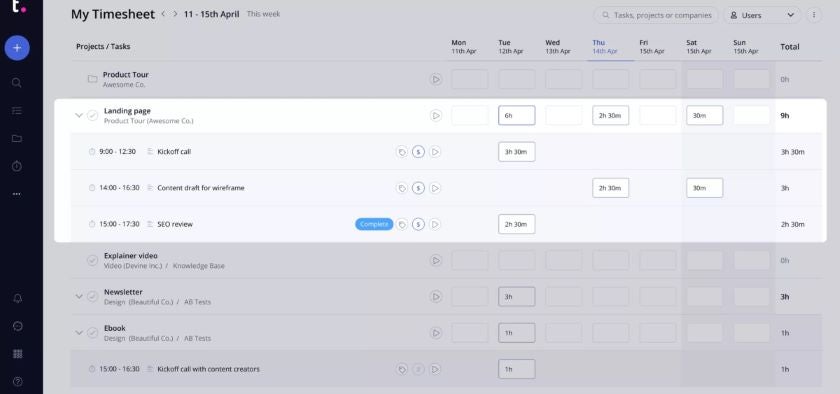
Top integrations
Teamwork’s integrations include Google Drive, Slack, HubSpot, QuickBooks and Xero.
Pros
- Strong features for client work, enhancing client collaboration.
- User-friendly interface, making it easy for your team and clients to use.
- Its feature set makes it more than suitable for remote teams.
Cons
- Limited integration capabilities, which might require workarounds for some workflows.
- Some features are only available in the higher-tier plans, which might limit functionality for teams on a budget.
Why we picked Teamwork
Teamwork has a vast catalog of project management features, much more than Basecamp’s offerings, particularly in time tracking and task dependency, that provide a more structured and detailed workflow for teams.
For more information, read the full Teamwork review.
Wrike: Best for enterprise teams

Wrike is a comprehensive project management tool designed with large teams and enterprises in mind. It offers robust features, including Gantt charts, workload view and custom dashboards. Wrike’s focus on enterprise-level project management, coupled with its scalability and strong security measures, makes it a compelling alternative to Basecamp for larger organizations.
Pricing
In addition to a free plan, Wrike’s paid plans include the Team plan at $9.80 per user per month, billed annually, the Business plan at $24.80 per user per month, billed annually, and an Enterprise plan with pricing available on request.
Features
- Gantt charts and workload view to visualize project timelines and resources.
- Custom dashboards and reports for personalized data visualization and insights (Figure E).
- Time tracking to monitor team productivity.
- Advanced integration capabilities to connect with your existing software ecosystem.
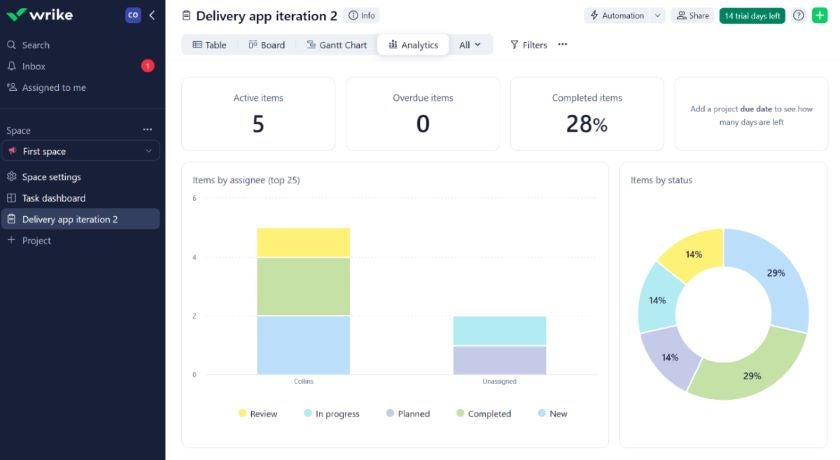
Top integrations
Wrike integrates with Salesforce, Tableau, Slack, Microsoft Teams and Adobe Creative Cloud, among others.
Pros
- Robust features for large teams, catering to complex project management needs.
- Scalable for large enterprises, making it suitable for growing organizations.
- Strong security measures to protect your project data.
Cons
- Can be complex to set up due to its extensive feature set.
- Higher price point, which might be a consideration for budget-conscious teams.
Why we picked Wrike
We picked Wrike for its ability to handle complex projects. Its advanced features, like Gantt charts and Kanban boards, provide a level of project visualization and management that alternatives like Basecamp lack.
For more information, read the full Wrike review.
Jira Software: Best for software development teams

Jira Software by Atlassian is specifically designed with software development teams in mind. It offers agile functionality, including Scrum and Kanban boards and deep integration with other Atlassian products. Software teams in particular will find Jira Software an attractive alternative to Basecamp, especially due to its robust feature set and standout agile features.
Pricing
Jira Software provides a free plan for up to 10 users. For larger teams, when billed monthly, the Standard plan costs $8.15 per user per month and the Premium plan is $16 per user per month. It also offers an Enterprise plan that’s billed annually, and its pricing is available on request.
Features
- Agile development features to support Scrum and Kanban methodologies (Figure F).
- Customizable workflows to fit your team’s development process.
- Deep integration with developer tools like Bitbucket, Confluence and CI/CD tools like Jenkins.
- Advanced reporting and analytics to track progress and performance.
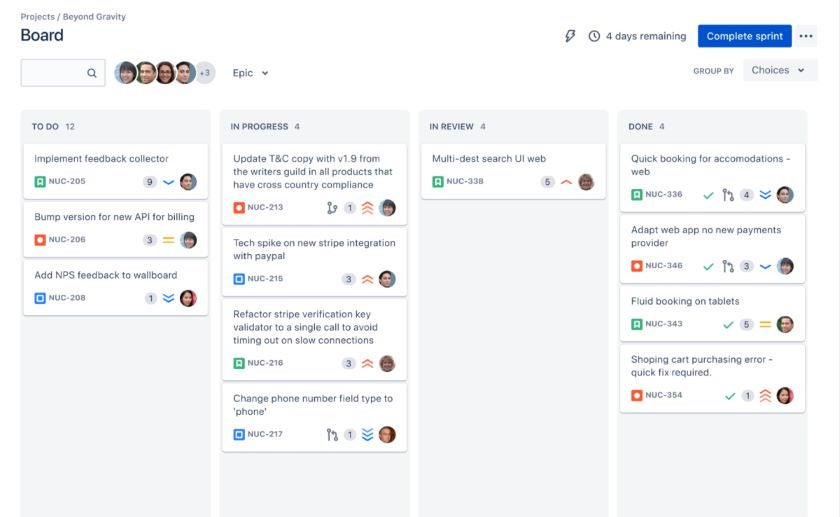
Top integrations
Jira Software’s top integrations include Confluence, Bitbucket, GitHub, Slack and Trello.
Pros
- Robust features for software development, catering specifically to developers’ needs.
- Deep integration capabilities with other Atlassian products for a unified toolset.
- Scalable for large teams, making it suitable for growing organizations.
Cons
- Steeper learning curve due to its focus on software development.
- Can be overkill for non-software projects, making it less suitable for general project management.
Why we picked Jira
We selected Jira due to its agile reporting and flexible permissions, particularly for software teams adopting agile methodologies. Jira’s advanced features support a more detailed and structured project management approach compared to Basecamp.
For more information, read the full Jira Software review.
Notion: Best for all-rounded workspace integration
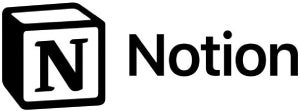
Notion is renowned for its all-encompassing workspace that merges notes, documents, databases and project management tools into a single platform. All these come together to create an intuitive centralized workspace that’s characterized by a seamless experience for teams looking to centralize their work processes.
Pricing
Notion’s pricing structure includes a free plan for individuals and small teams, with paid plans starting at $8 per user per month for the Plus plan and $15 per user per month for the Business plan when billed annually.
Features
- Versatile workspace combining notes, tasks and databases.
- Extensive template gallery for various use cases (Figure G).
- Real-time collaboration across the platform.
- Integrated AI assistant to ease task and content management.
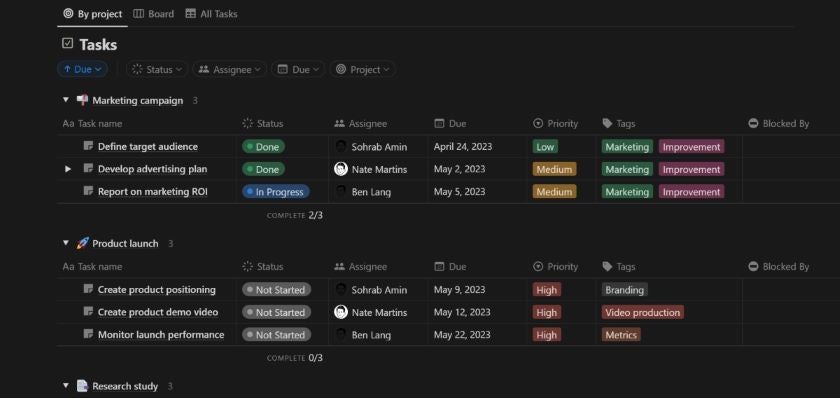
Top integrations
Notion’s top integrations are Everhour, Jira, Asana, Slack and Zapier.
Pros
- Unified platform for notes, docs and project management.
- Highly customizable with a wide range of templates.
- Supports real-time collaboration for teams.
Cons
- May be overwhelming for new users due to its vast capabilities.
- Limited offline functionality compared to some competitors.
Why we picked Notion
We chose Notion for its unparalleled flexibility in managing notes, tasks and databases all on one platform. Its vast integrations make it a central hub for team collaboration and project management.
For more information, read our full Notion review.
Smartsheet: Best for spreadsheet-like project management

Smartsheet is a versatile platform that adapts to various work management needs, from project management with Gantt charts to CRM applications. Its standout quality is its spreadsheet-like interface, which offers a familiar interface for users who already use spreadsheets for their workflows.
Pricing
In addition to a free plan, Smartsheet costs $7 and $25 per user per month for the Pro and Business plans, respectively, both billed annually. The Enterprise plan’s pricing information, however, isn’t publicly listed.
Features
- Spreadsheet-style interface.
- Advanced project management tools like Gantt charts and Kanban boards.
- Customizable dashboards and reports for comprehensive project insights (Figure H).
- Real-time collaboration with shared views and automated workflows.
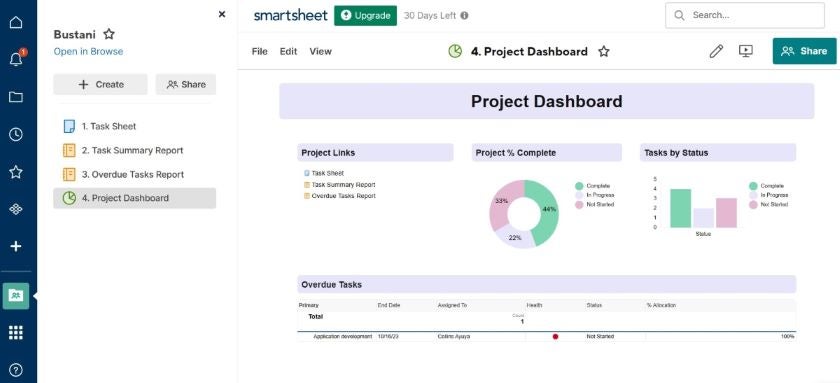
Top integrations
Smartsheet integrates with Slack, Microsoft Teams, Tableau, Power BI and Adobe Creative Cloud.
Pros
- Thorough project management and collaboration features.
- Extensive customization and automation options.
- Vast integrations with popular business tools.
Cons
- May have a steeper learning curve for new users.
- Some users may find its spreadsheet style to be visually unappealing.
Why we picked Smartsheet
We chose Smartsheet for its spreadsheet style approach to project management, which makes it intuitive for teams that previously handled their workflows in spreadsheets. It also has advanced project management capabilities and extensive integration options.
For more information, read the full Smartsheet review.
Zoho Projects: Best for in-depth project tracking

Zoho Projects is a project management tool that offers detailed project tracking and management capabilities, with a suite of tools designed to facilitate task assignment, progress tracking and collaboration. Its emphasis on time tracking and bug tracking helps teams that need a granular view of project timelines and issues.
Pricing
Zoho Projects offers a free plan for up to 3 users, with its Premium plan priced at $4 and its Enterprise plan at $9 per user per month, both when billed annually.
Features
- Detailed task management with time tracking and bug tracking features (Figure I).
- Gantt charts and Kanban boards for visual project planning.
- Customizable reports and dashboards for real-time project insights.
- Automated workflows to streamline project processes.
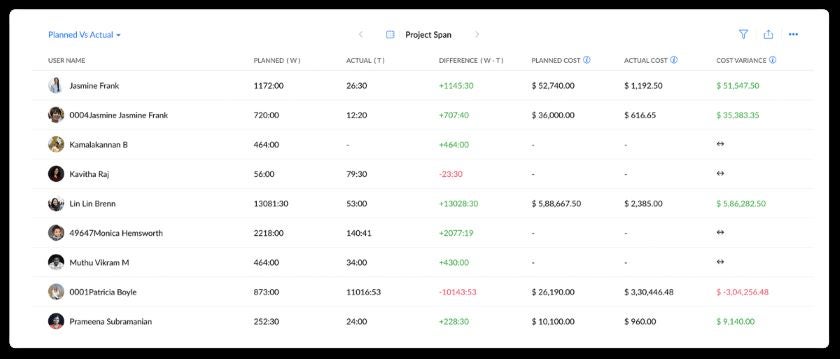
Top integrations
Zoho Projects’ top integrations include Zoho CRM, Zoho Analytics, Slack, GitHub and Google Workspace.
Pros
- Effective project management features with a focus on time and bug tracking.
- Affordable pricing with a generous free plan.
- Many customization options for reports and dashboards.
Cons
- The interface may feel cluttered to new users due to the extensive features.
- Integration with non-Zoho apps may require additional configuration.
Why we picked Zoho Projects
We chose Zoho Projects in consideration of users already using other Zoho products. It’s a no-brainer for users deep in the Zoho ecosystem as it integrates seamlessly to deliver effective project management features, with a particularly strong focus on time and bug tracking. Also, with a starting price of $4, Zoho Projects is quite affordable.
For more information, read our full Zoho Projects review.
Nuclino: Best for lightweight team collaboration
Nuclino gives its users a unified space by bringing together knowledge, documents and projects on one intuitive platform. It has a simple and intuitive interface that makes it easy for teams to organize information and work together efficiently. Nuclino’s lightweight nature underpins its focus on speed and simplicity, providing a clutter-free and straightforward collaboration tool.
Pricing
Nuclino provides a free plan with basic features, and its paid plans cost $5 per user per month when billed annually or $6 per user per month when billed monthly for the Standard plan and $10 per user per month when billed annually or $12 per user per month when billed monthly for the Premium plan.
Features
- Real-time collaborative editing for documents and notes.
- Lightweight and fast, with a focus on simplicity and usability.
- Easy organization of content with a hierarchical structure.
- Multiple views, like board, list, table and graph, to track project progress (Figure J).
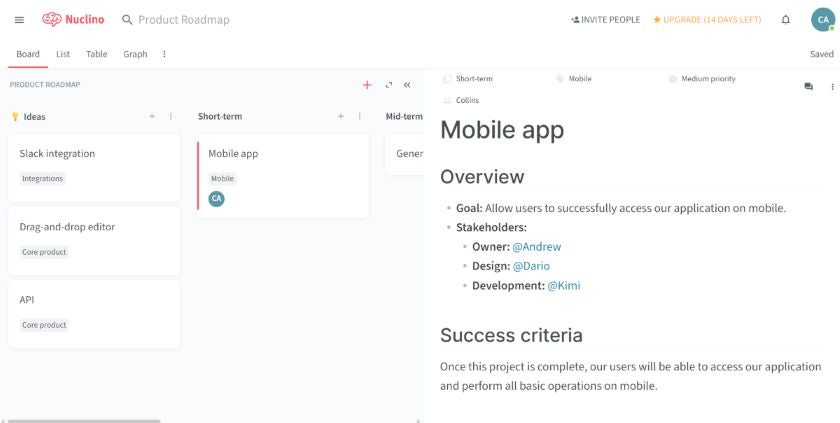
Top integrations
Nuclino’s top integrations include Slack, Google Drive, Figma, Trello and GitHub.
Pros
- Simple and intuitive interface for easy adoption.
- Real-time collaboration on documents and notes.
- Fast performance, even with large amounts of data.
Cons
- Limited advanced project management features compared to other tools.
- May not be suitable for teams requiring complex task management capabilities.
Why we picked Nuclino
Nuclino was an easy choice because of its simplicity and speed. It’s a lightweight solution that brings ease of use and efficient collaboration. Its real-time editing capabilities and seamless integrations make it a great alternative to Basecamp for users who lean towards knowledge sharing and documentation.
Is Basecamp worth it?
Yes! I found value in Basecamp as a project management tool, though it’s worth noting that it was for a simple project management use case. Its strengths lie in its simplicity and ease of use. It offers a clean, intuitive interface that made it easy for me to get started without a steep learning curve. The tool’s core features, such as task management, message boards and schedules, among others, are straightforward and effective, making it a solid choice for teams looking to streamline their workflow and enhance collaboration.
However, it’s also important to consider what Basecamp doesn’t offer. While its simplicity is a strength, it can also be a limitation for teams that require more advanced features. For instance, Basecamp does not offer Gantt charts, a feature that many project managers rely on for visualizing project timelines. It also lacks certain customization options that some teams might find necessary.
In terms of pricing, Basecamp’s flat rate pricing makes it clear and predictable, and having only two tiers of $15 per user per month and $299 for unlimited users per year makes pricing quite straightforward. But it’s worth noting that the $15 tier is slightly higher than most of the lowest pricing tiers of the alternatives covered.
For more information, read the full Basecamp review.
Do you need a Basecamp alternative?
Whether you need an alternative to Basecamp depends on your specific needs and circumstances. If you’re looking for more advanced features, more customization options or a pricing model that appeals to you more, then one of the alternatives listed above may be a better fit for you.
For instance, if you’re a software development team, you might prefer Jira Software for its robust agile development features. If you’re a freelancer or a small team on a budget, you might find ClickUp or Asana’s free plans more appealing. If you’re a larger enterprise with complex project management needs, Wrike’s robust features and scalability might be more suitable.
Methodology
To deliver an unbiased comparison of the tools listed above, we created a shortlist of tools that teams would typically consider should they either stop using Basecamp or want to compare with Basecamp to make an informed choice. We compared the features and pricing of these tools. We then used verified user reviews to understand the experience of other users, followed by testing most of them for a hands-on feel for most of the tools to augment our findings and determine their strengths, weaknesses and standout features.
Featured partners
1
Jira

Visit website
Simple and powerful way to track and manage issues. It handles all kinds of issues (bugs, features, enhancements, and tasks) and can be used for bug tracking, development help, project management, or group task cataloging.
Learn more about Jira
2
Zoho Projects

Visit website
Zoho Projects is an online project management software that helps teams plan projects and track them efficiently to the finish line. By intuitive reporting of project progress and budget health, the solution enables teams to make quick decisions. Catering to all kinds of teams, Zoho Projects facilitates automating tasks, workflows, and project notifications in a bid to improve productivity.
Learn more about Zoho Projects

